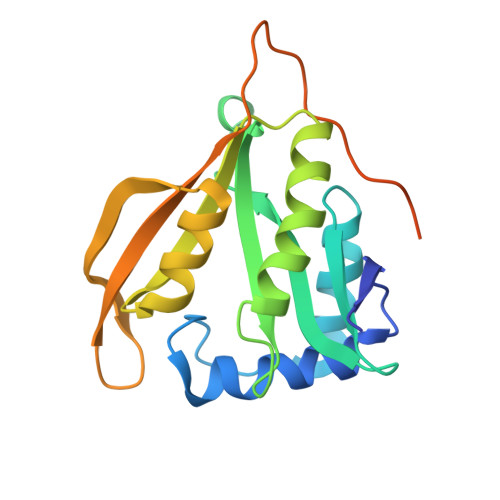Arsinothricin, an arsenic-containing non-proteinogenic amino acid analog of glutamate, is a broad-spectrum antibiotic.
Nadar, V.S., Chen, J., Dheeman, D.S., Galvan, A.E., Yoshinaga-Sakurai, K., Kandavelu, P., Sankaran, B., Kuramata, M., Ishikawa, S., Rosen, B.P., Yoshinaga, M.(2019) Commun Biol 2: 131-131
- PubMed: 30993215
- DOI: https://doi.org/10.1038/s42003-019-0365-y
- Primary Citation of Related Structures:
5JTF, 5WPH, 6M7G - PubMed Abstract:
The emergence and spread of antimicrobial resistance highlights the urgent need for new antibiotics. Organoarsenicals have been used as antimicrobials since Paul Ehrlich's salvarsan. Recently a soil bacterium was shown to produce the organoarsenical arsinothricin. We demonstrate that arsinothricin, a non-proteinogenic analog of glutamate that inhibits glutamine synthetase, is an effective broad-spectrum antibiotic against both Gram-positive and Gram-negative bacteria, suggesting that bacteria have evolved the ability to utilize the pervasive environmental toxic metalloid arsenic to produce a potent antimicrobial. With every new antibiotic, resistance inevitably arises. The arsN1 gene, widely distributed in bacterial arsenic resistance ( ars ) operons, selectively confers resistance to arsinothricin by acetylation of the α-amino group. Crystal structures of ArsN1 N -acetyltransferase, with or without arsinothricin, shed light on the mechanism of its substrate selectivity. These findings have the potential for development of a new class of organoarsenical antimicrobials and ArsN1 inhibitors.
- 1Department of Cellular Biology and Pharmacology, Florida International University, Herbert Wertheim College of Medicine, Miami, FL 33199 USA.
Organizational Affiliation:

















